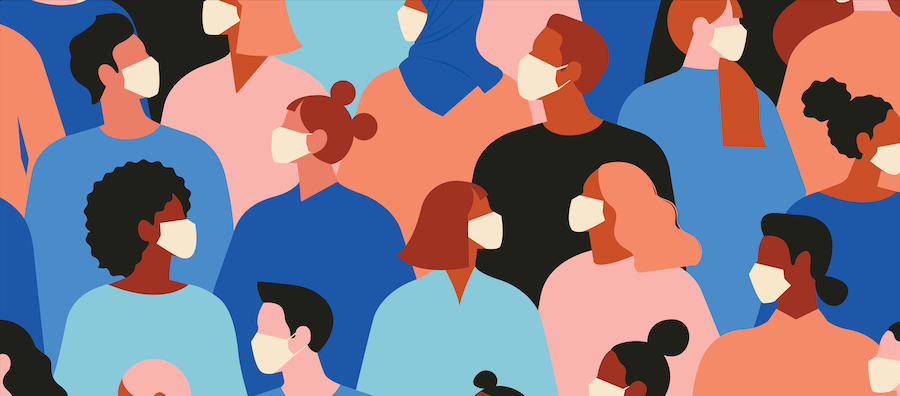
Thought Leadership from Posterscope USA’s President, Christian Vollerslev.

So many industries have been negatively impacted, and advertising and media are no exception. Some silos, such as digital and social marketing, have benefited from increased connectivity and time spent online. TV and video advertising have also seen a surge due to consumers watching increased hours of content.
But other channels have seen canceled campaigns and large declines, with one of the more prominent being out-of-home (OOH), a media channel that, let’s be honest, brands are not going to covet with stay-at-home orders in effect.
As OOH begins to contemplate recovery, along with the rest of the economy, there are a few different directions things can go in a post-pandemic environment.
The glass-mostly-empty view
It’s possible that the reopening of business will happen very slowly. A limited amount of traffic allowed within a location, combined with requirements for the use of masks and gloves, could deter people from returning to normal activities.
Companies may make work-from-home policies more permanent, recognizing that the expense of keeping huge office space is too burdensome to carry, leading to fewer commuters on public transportation and fewer consumers out and about throughout the workday. OOH media intended to reach consumers at the gym, on the train, in a taxi or at the airport would become much less valuable, causing campaign activity to remain stuck at low levels.
I don’t envision a future this bleak. We’re already seeing increases in traffic and movement as states slowly open up.
The glass-half-full view
In a best-case scenario, businesses would reopen and traffic build quickly. Social distancing measures in place keep the virus at bay, driving up consumer activity and confidence. Americans emerge from their quarantine caves, itching to get out of the house and back to shopping, dining out, going to the movie theater and working from their offices under revised protocols, consuming OOH media throughout their daily journeys.
We would also witness the concept of “revenge shopping,” which occurred in China shortly after restrictions were lifted, resulting in the Guangzhou Hermes store generating $2.7 million in sales on the first day it reopened. Advertisers, anxious to re-engage, would fire up campaigns intended to reconnect with consumers in metro areas as they shop, browse or climb aboard trains on their routes to and from work. The OOH industry bounces back with even greater demand as traffic levels return as if COVID-19 never happened.
While one can always dream, chances are this scenario won’t play out either. We likely end up somewhere in the middle.
Our (likely) new normal
In the more likely scenario, OOH will lean more heavily on data-led planning to navigate and understand the new traffic patterns that have emerged. Hyperlocal data will help brands understand how audience journeys are shifting as the country reopens at different paces, and it will inform how to best use different OOH formats to reach those audiences along the way.
Highway bulletins will likely take on greater importance as more commuters take to their cars, leery of mass transit. The use of programmatic OOH may accelerate as brands require the flexibility to optimize campaigns based on changing market conditions. Brands will more deeply embrace dynamic messaging as they pursue ways to connect with consumers on a more meaningful level. Location data and agility, already important in OOH, will likely become more crucial as the industry emerges from the pandemic.
OOH has a strong track record of recovering quickly from downturns. If there’s good news in this last, most realistic scenario, it’s that OOH has made investments in recent years that position the industry to succeed in its own right while also becoming a medium that businesses rely on as they embark on the road to recovery.
Published: May 26, 2020